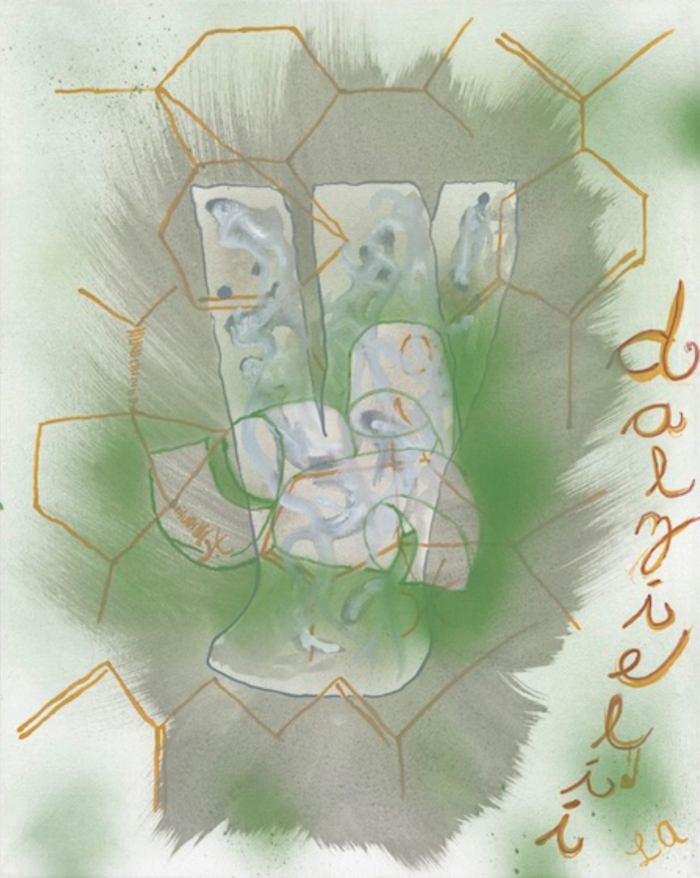
Frankincense (Boswellia dalzielii) by Lucas Anderson
Buy Prints Online
Paper prints and canvas prints of this painting of various sizes are available through Lucas Anderson’s website.
About the Painting
Each painting in the series is created on canvas using hand-mixed egg tempera, made with carefully selected pigments. A “primary” colour is chosen for each piece—used to depict the chemical structure—and infused with a small amount of the corresponding essential oil to capture its unique energetic quality.
Support Conservation
To support the sustainability of the Boswellia species supply chain, Essential Oil Art will donate 50% of the profits from the sale of prints featuring the nine species of frankincense paintings to Airmid.
This donation serves as a gesture of gratitude to Airmid for covering the cost of supplies for these artworks, reinforcing our shared commitment to the preservation and ethical sourcing of frankincense.
Prime Colour
Yellow Ochre
Artist’s Statement
This painting captures the essence of Boswellia dalzielli essential oil. This painting was one of the most difficult for me to complete. I struggled to find what to put into it.
This species of frankincense is not traditionally used for essential oil. Traditionally it was used for its bark. Only more recently has the resin and essential oil been used. It is high in boswellic acid which is of high medical interest. The bark can look very gnarled and mangled and look like “how can the tree be alive”. It has a low percentage of essential oil.
The artwork draws on this more traditional use of the tree, the bark, with its gnarled appearance. Along with its gnarled appearance, the representation of wood shavings indicating the heavy use of the bark.
Botanical Information
Boswellia dalzielii, native to Burkina Faso, Mali, and Nigeria, is traditionally known as Janawhi or Cricognimu. Its essential oil contains major constituents such as α-pinene, myrcene, limonene, and δ-thujene, contributing to its antimicrobial, anti-inflammatory, analgesic, and vulnerary properties. The oil has a fresh, earthy-resinous, coniferous, green-lemon-like, and sweet-woody fragrance profile. Boswellia dalzielii resin is often collected from natural exudation, though some trees are transitioning to active tapping. The species’ greatest threats are grazing, and bark harvesting, which, if unmanaged, can significantly impact tree health and survival. It primarily grows on communal grazing land, which is open-access and dominated by nearby village communities. While B. dalzielii is preliminarily assessed as Least Concern, sustainable harvesting practices and land management strategies are essential to ensure its long-term ecological and economic viability (Johnson & Ablard, 2020).
Johnson, S. P., & Ablard, K. M. (2020). Frankincense: Tapping into a sustainable future. International Journal of Professional Holistic Aromatherapy, 9(3), 45-56.


